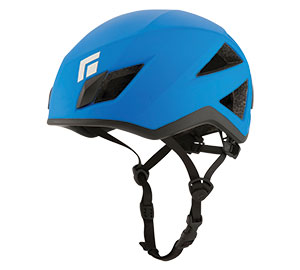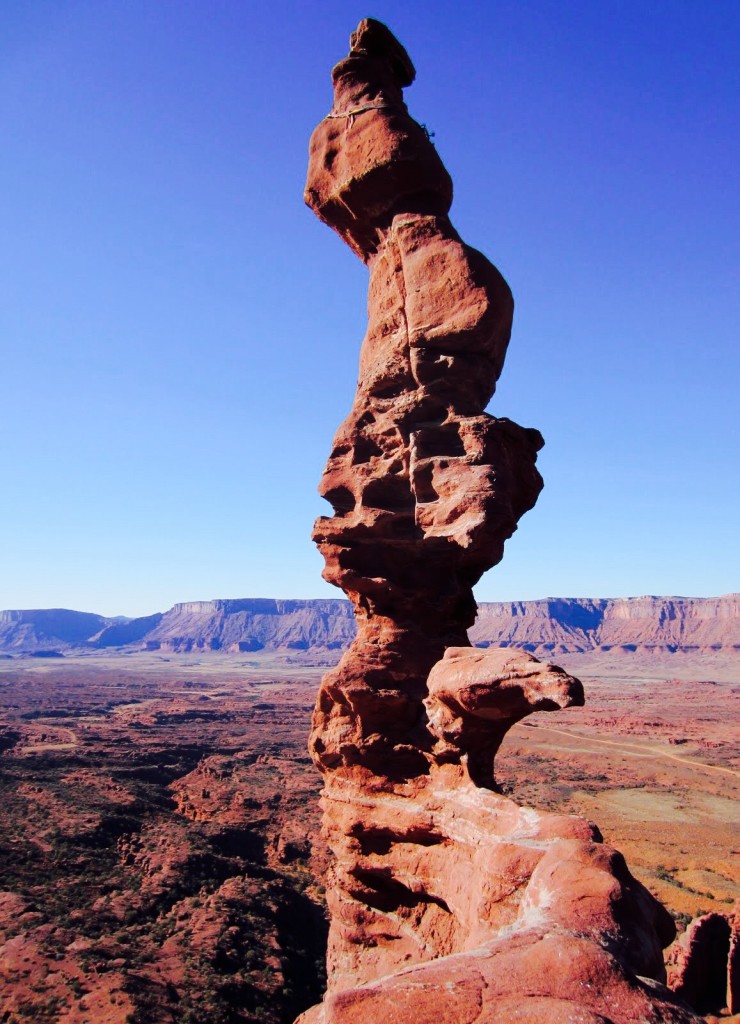(Not) Climbing Ancient Art
We stood in the parking lot at the base of the Fisher Towers early in the morning of our big ascent day and stared at the fecund clouds in the sky. Raindrops peppered the dusty ground. A gust of wind rushed past us. Dark clouds moved swiftly in the stormy wind. The twisted muddy spires were soaked.
The Fisher Towers feature some of the most eerie desert spires, fins, and towers, and make for some dirty and dangerous climbing.
I came here to climb Ancient Art. It’s easily the most popular of the Fisher Towers, and I’ve had the desire to climb it since I learned of its existence. The corkscrew summit is pinnacled in mid-heaven via the Stolen Chimney route and provides 360 degrees of bedeviling exposure once you’re on top. This squiggly four-pitch 5.10 trad route has a tilted convex summit with a circumference of maybe three feet. Sounds intriguing, right?
My friend, Julie, and I had been planning this climbing trip for months. I trained for it. I wanted the photos. I committed to writing an article about it. I drove 250 miles from Salt Lake City to Castle Valley to do it. We diligently checked the forecasts. We even had a strategic plan to beat the crowds.
But none of that mattered.
Though there was only a slight chance of precipitation forecasted for the late afternoon, a weak storm had passed through overnight, killing our chance at an early summit that morning.
There is nothing else like Ancient Art on Earth and I deeply, desperately, defiantly wanted to climb it that day. Not the day after, not next month. Right then. Maybe, just maybe, it would be okay to go for it? Maybe the rain hadn’t fully saturated the muddy sandstone?
That’s my high tolerance for risk and the escalating commitment speaking. I have a high risk-reward ratio. Was it worth the risk? Was I making a decision that was clear-headed and non-emotional? Definitely not. Though it was heartbreaking to back away, it’s the kind of decision everyone has to make at one time or another in order to stay safe while pursuing adventures with higher levels of risk.
What’s the worst that could happen?
On the morning of August 1, 2014, Unofficial Networks broke the news that The Cobra, a 60-foot spire resembling a reared cobra snake, had toppled during a heavy storm at the Fisher Towers. The Cobra was the smallest of the towers, situated between Ancient Art and Cottontail Tower. The Cobra falling down was only a matter of time… and geology.
The problem with climbing these hoodoo formations is that they’re made of dark red Cutler sandstone, topped by harder Moenkopi sandstone, and covered in hardened mud, which makes them too risky to climb if it has recently rained.
I knew it was not a good idea to climb Ancient Art that day, but I still entertained the idea. This is a common theme among outdoor enthusiasts. Why do we do that?
Bruce Tremper, the Retired Director of the Utah Avalanche Center, discusses The Human Factor in his book Staying Alive in Avalanche Terrain and breaks down heuristics in backcountry recreation decision making that are very applicable to other adventure sports.
Even in the face of staggering proof that danger is ahead some people will proceed anyway. Why? According to Tremper, because they are bad at practicing evidence-based decision making and critical analysis—they have reckless summit fever, they have Kodak courage, and/or they have been extremely lucky in the past and mistake their luck for skill.
For instance, in investigating avalanche accidents, Tremper was able to determine that victims either didn’t notice the danger or had unrealistic perceptions about their ability to deal with it. “I’m not sure what it is about avalanches, but people invariably overestimate their skills,” says Tremper. Not surprisingly, 93 percent of avalanche fatalities are men. Why only seven percent women? Because most women are not as likely to take such risks.
The vagaries of human emotion aside, some people are just not thinking at all. Those who lack the education and self-awareness to learn about the hazards make up two-thirds of the fatalities in the backcountry—simple ignorance. In other words, smart people make dumb mistakes and dumb people make dumb mistakes.
One of the biggest pitfalls of being an experienced surfer, climber, paraglider, skier, (insert your favorite sport), is that while you may be talented at that sport, it’s unlikely that you are a professional guide in that field or hold a PhD in oceanography, geology, anemology, atmospheric science, or (insert related area of study). If you are a bonafide expert, you fall in the 98th percentile, meaning general recreationists will make up the majority of fatalities in outdoor sports accidents, while it is very rare that a professional dies.
Tremper points out that when someone dies in an outdoor recreation accident, the news reports will mention whether the victim was experienced at the sport or not, but how often do you also hear about their level of education with the environment they were in?
There is a big difference between being an experienced climber and expert climber. In Malcolm Gladwell’s book Outliers: The Story of Success, he illustrates through several case studies and empirical scientific evidence that researchers have settled on what they believe is the magic number of hours of practice required to reach true expertise—it’s 10,000. Unless you are friends with the likes of Alex Honnold (Hi Alex!), you probably don’t know too many people who have more than 10,000 hours of practice climbing.
Though it was disappointing that we couldn’t climb Ancient Art that day, the good news is that it’s much more stable than The Cobra and will probably be around at least long enough for me to go back in a few weeks to make the purchase. Perhaps we all need to be shut out sometimes to be reminded about extracting emotions from our decisions when it comes to lofty outdoor pursuits.
We found a few other ways to entertain ourselves in Moab. As it turns out there are other things to do there besides climb. Who knew? We’ll be back soon to slay the dragon and that means I’ll have more time to rough up my hands and practice cam removal between now and then.
Climbing Essentials

Lolë Women Sita Tank Top
This piece keeps you cool and breezy while you reach for the summit; it has a built-in bra with a crossover back for optimal breathability and adjustable straps. It’s made from an eco-friendly blend of polyester, Tencel® Lyocell, and cotton and is naturally antibacterial and moisture wicking. $70 lolewomen.com

Stonewear Designs Sprinter Capri
Capri tights are the best climbing apparel for ladies. The Sprinter is comfortable, stretchy, fast-drying, and made from recycled compression power fabric. They have a wide, contrasting waistband that features a hidden zip pocket. $72 stoneweardesigns.com

Black Diamond Equipment Vector Helmet
This lightweight hybrid-shell helmet has a ratcheting adjuster and provides great ventilation during long routes. This model has lots of integrated functionality, like in-mold headlamp clips for secure attachment, and it’s made from co-molded EPS foam with a polycarbonate shell. $99 blackdiamondequipment.com

Black Diamond Equipment Ethos Harness
This women’s specific harness is the counterpart to the men’s Chaos. Ideal for trad climbing, it’s as comfortable as it is durable thanks to a bullhorn-shaped waistbelt design, which uses a thin layer of Vectran fibers in place of traditional webbing to evenly distribute weight throughout the waist and legs. Four pressure-molded gear loops hold cams, slings, and other essentials. $124 blackdiamondequipment.com

Five Ten Stonelands Lace-up Climbing Shoes
Say no more to climbing shoes that cause searing pain. The Stonelands Lace-up is designed to cradle the foot in a more natural flat-toed position. Inside is a synthetic sock for all-day comfort. The moderate profile shape performs on everything from dime edges to narrow cracks so they’re great for climbing in the desert. $140 fiveten.com

Mountain Hardwear Hueco 20 Backpack
Made to function well on a multi-pitch climb, this rock-climbing specific pack conforms to the body for maximum range of motion. There are lots of pockets for climbing essentials, zippered security pockets, and smart features, such as a stowable rope strap that deploys when needed. $80 mountainhardwear.com

